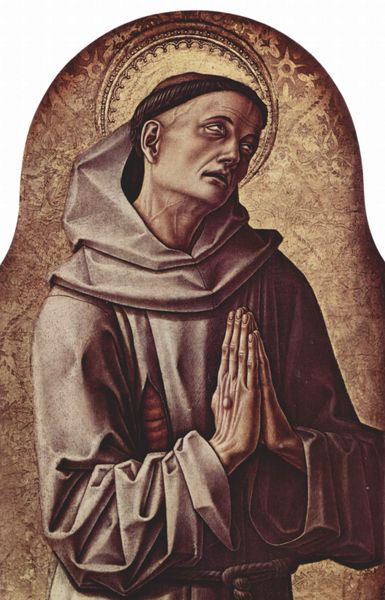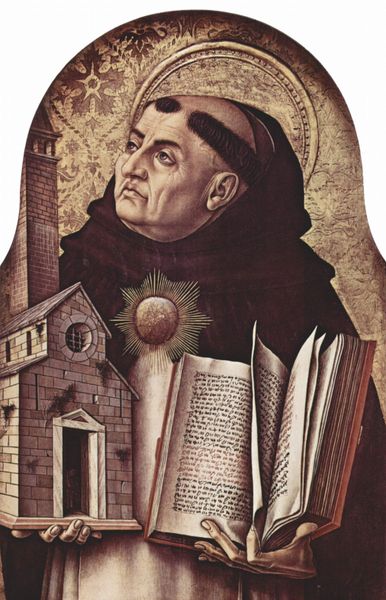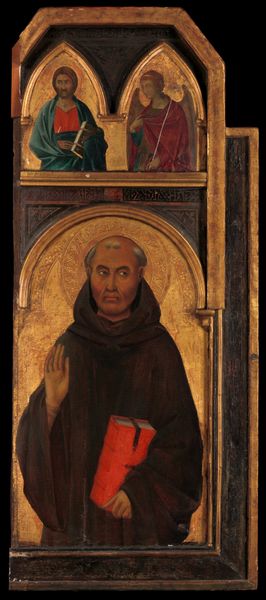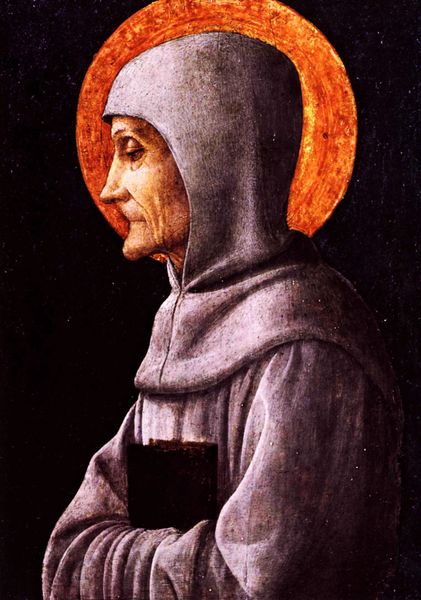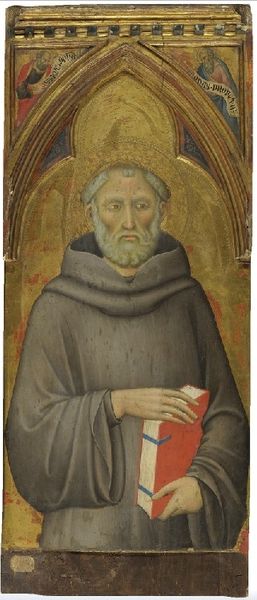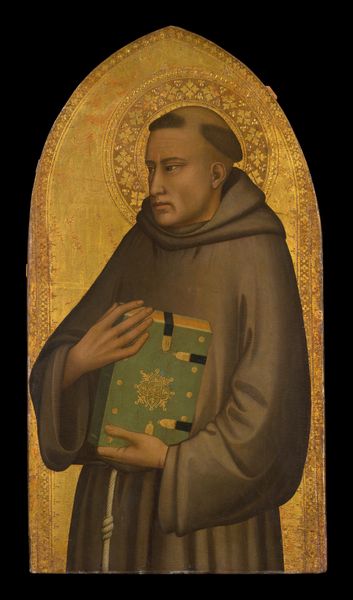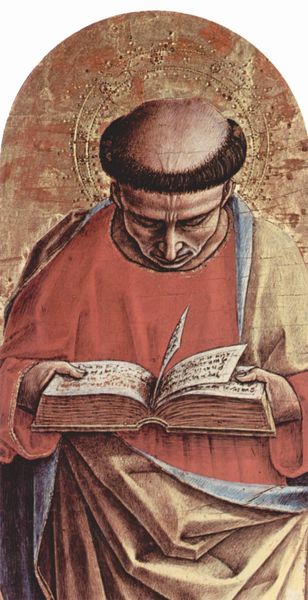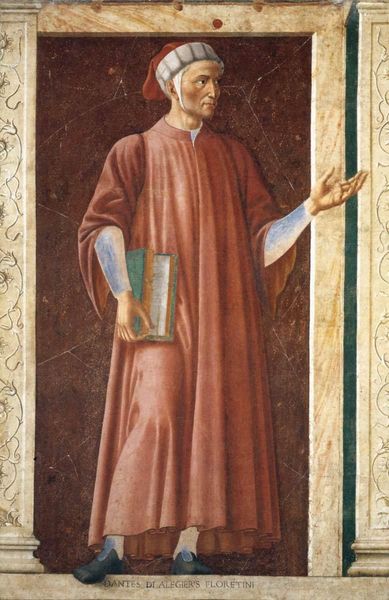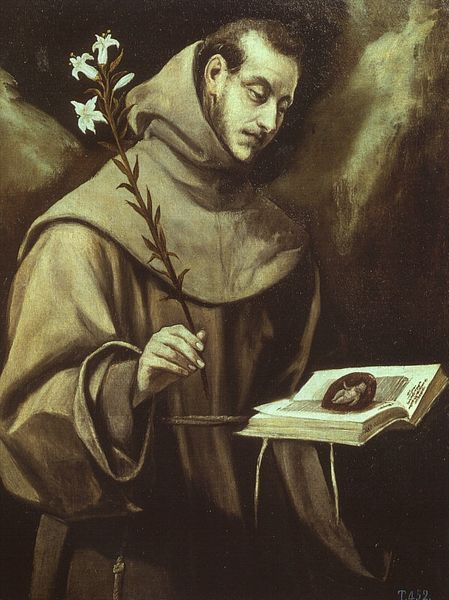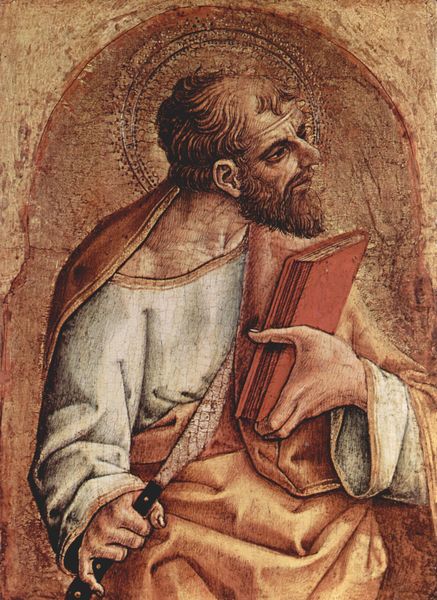
tempera, painting
#
portrait
#
allegory
#
tempera
#
painting
#
christianity
#
animal drawing portrait
#
history-painting
#
italian-renaissance
#
portrait art
Dimensions: 74 x 54 cm
Copyright: Public domain
Curator: Standing before us, rendered in tempera, is Carlo Crivelli's "Saint Francis," created around 1470. There's a quiet intensity to this image, isn't there? Editor: Absolutely, the somber mood is what strikes me first. He is enshrouded in introspection; it reads as more of a lament than pious meditation. Is it that the modeling of his face casts such deep shadows? Curator: The light certainly emphasizes a contemplative gravity. Notice how Crivelli positions him in a liminal space, gazing downward toward his book. His body language emphasizes inwardness. This echoes the saint's devotion and focus on a simple lifestyle of quiet service, reflective of the symbolic commitment to literacy that Franciscan monks embraced as essential for religious study and devotion. Editor: But even here, in this so-called simple scene, are layers of representation. Monastic devotion at that time meant social elevation. In this way, the quiet moment contains so much history, referencing class, religious order, and intellectual tradition. Is this work designed to instruct the pious or celebrate them? Curator: I see it as both. The Italian Renaissance placed renewed focus on portraying religious figures as relatable human beings while reaffirming symbolic visual shorthands. This humanization invited connection with ordinary people who were seeking access to the Church’s teachings. Editor: What of the medium? Is the choice of tempera significant, speaking to some prior aesthetic sensibility? Curator: Yes, indeed. Tempera allowed Crivelli incredible detail; look at the halo’s intricate tooling or the careful gradation of the saint’s face and habit. The work maintains its iconographic character while simultaneously incorporating an attention to realistic detail. Editor: Considering what it would have meant for art production and visuality at that time, the work, even when dealing with quiet contemplation, speaks volumes on the power of visual construction. Curator: Yes, even within its stillness, the artwork offers such insights into a very important historical moment. Editor: It leaves us with an enduring understanding of the dynamics between spirituality, visual rhetoric, and material history.
Comments
No comments
Be the first to comment and join the conversation on the ultimate creative platform.
